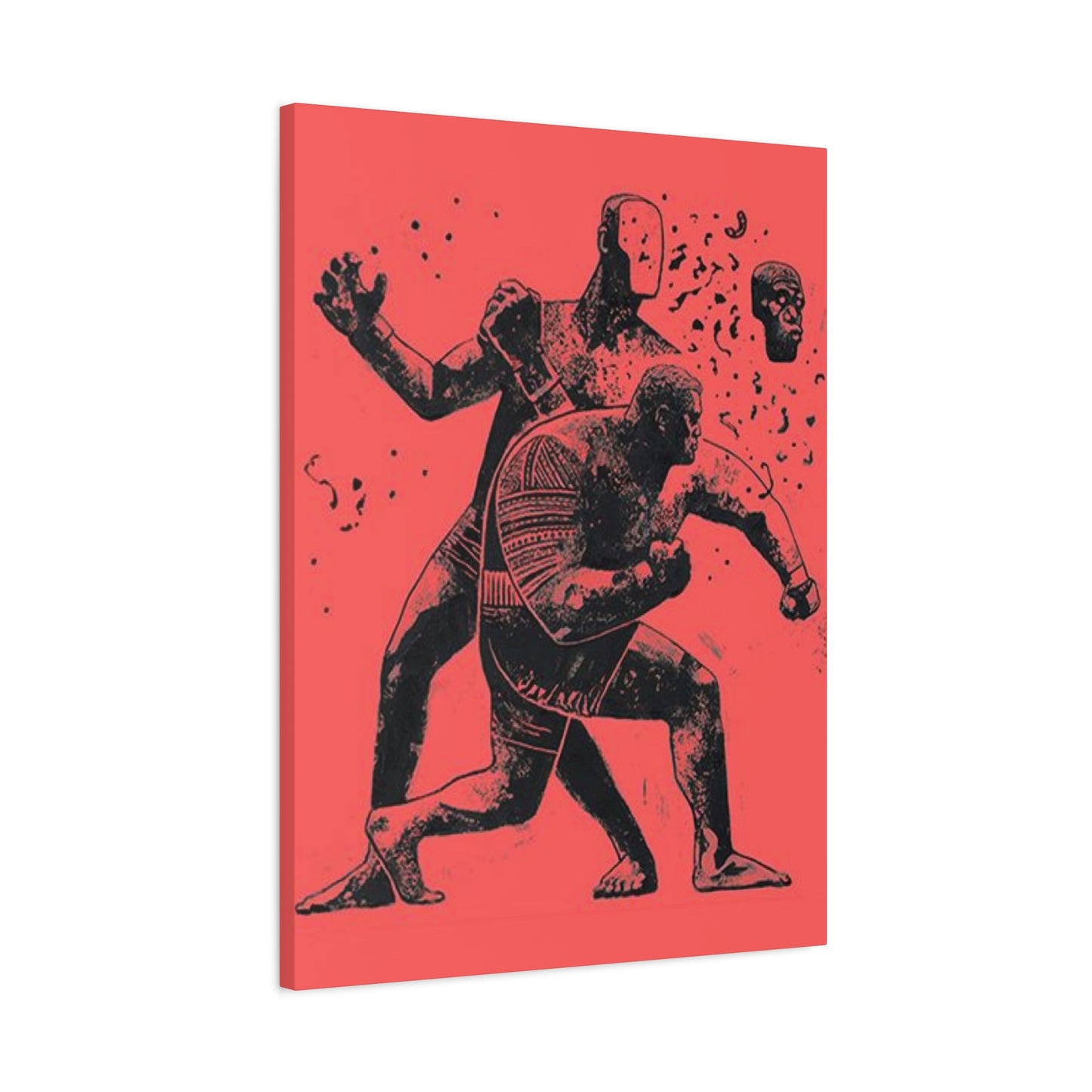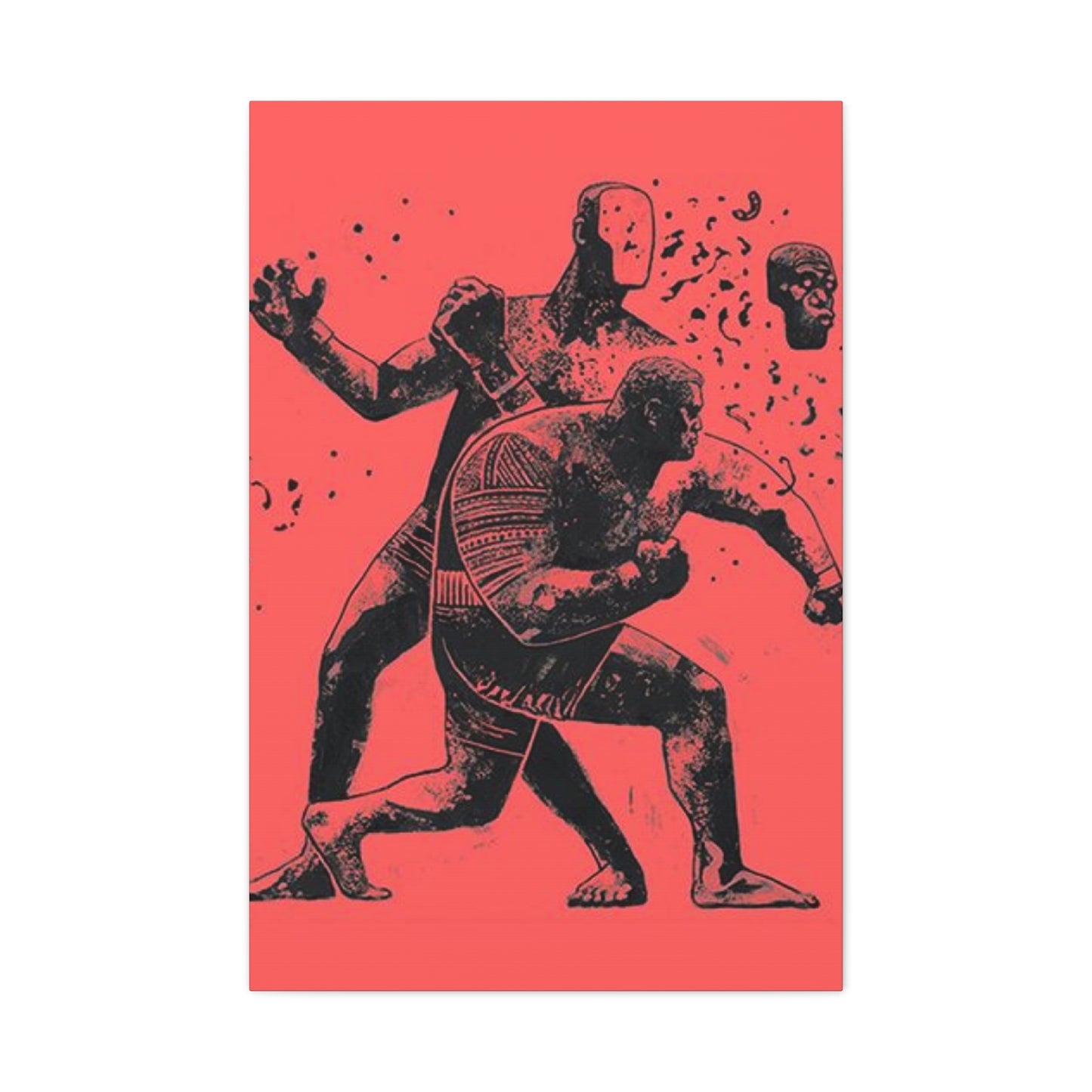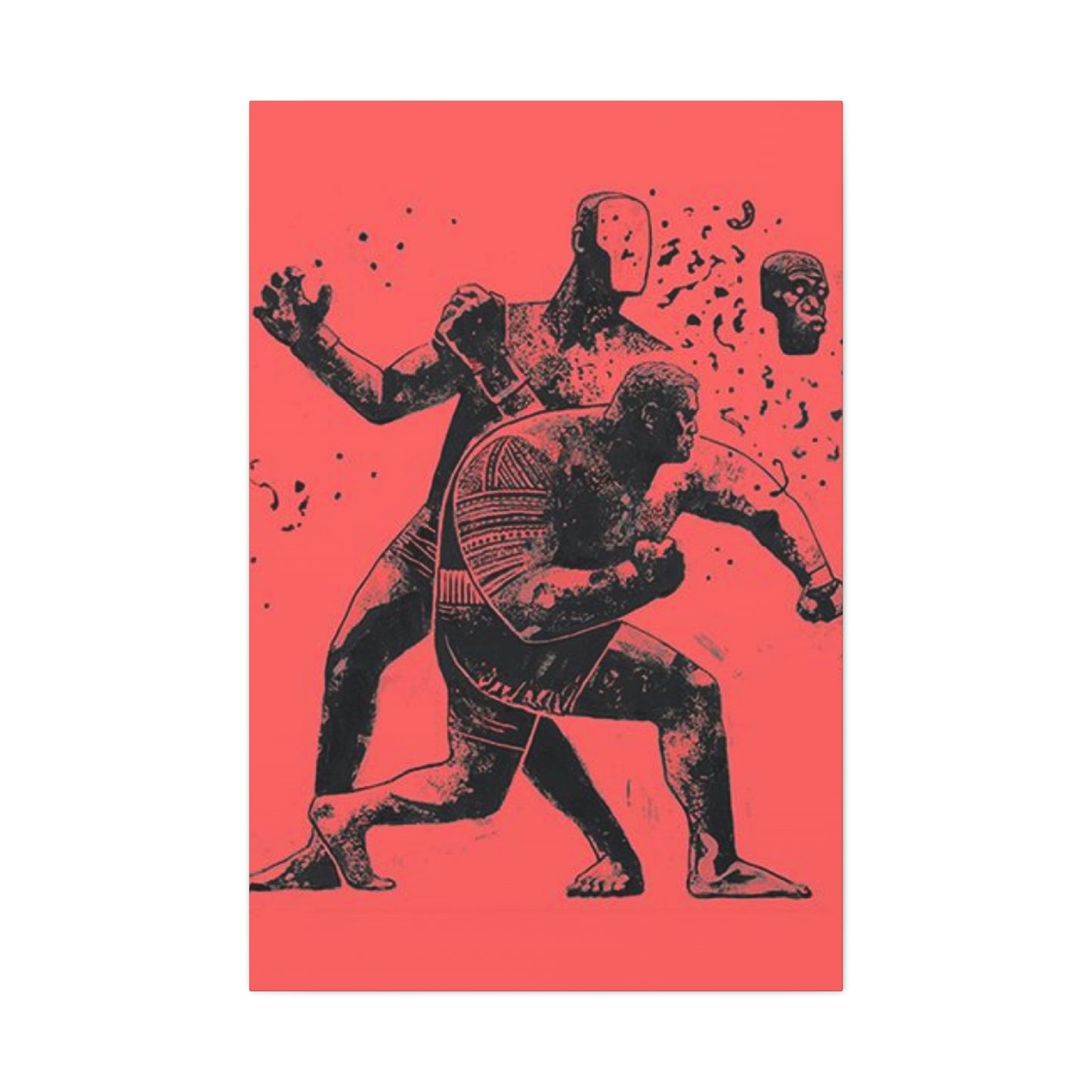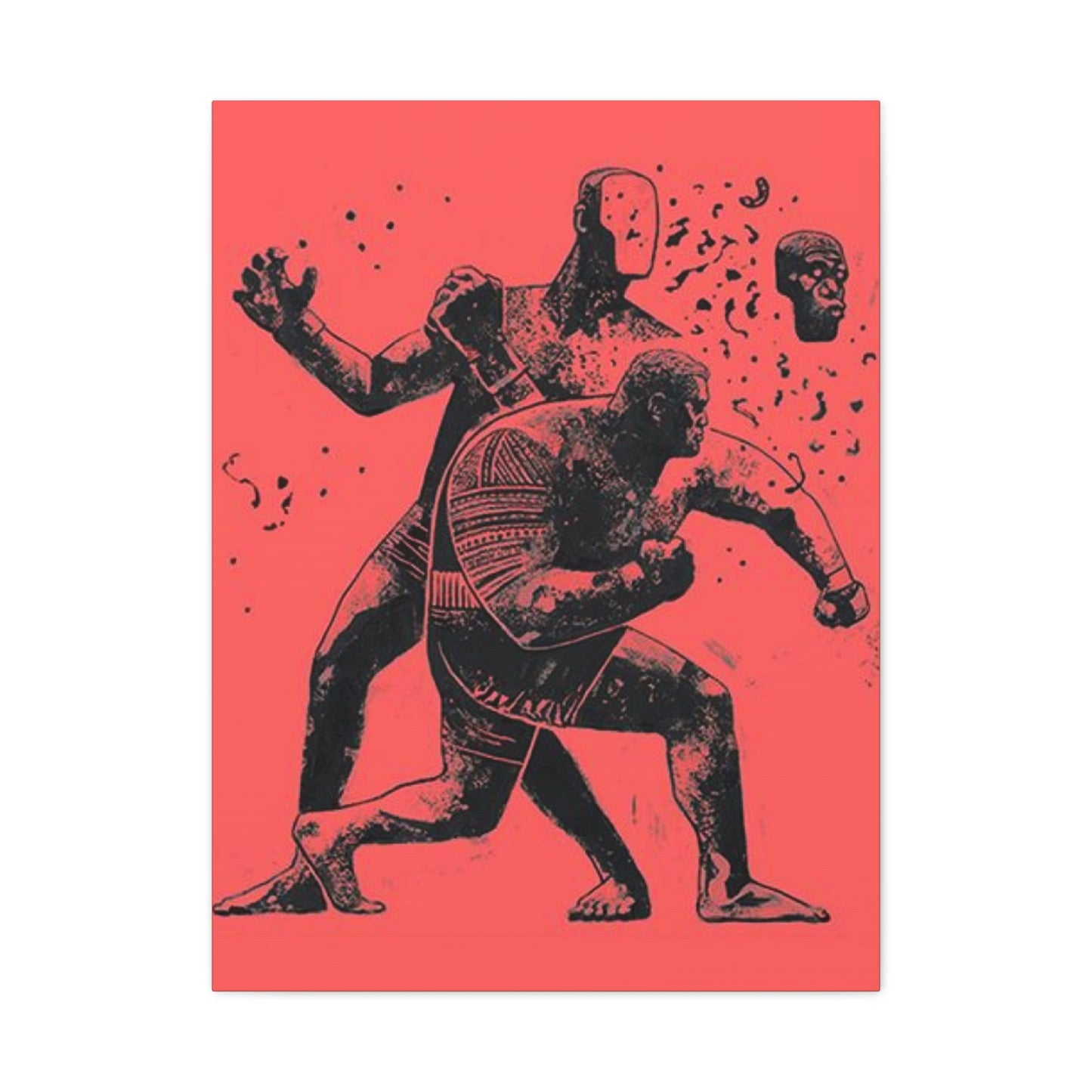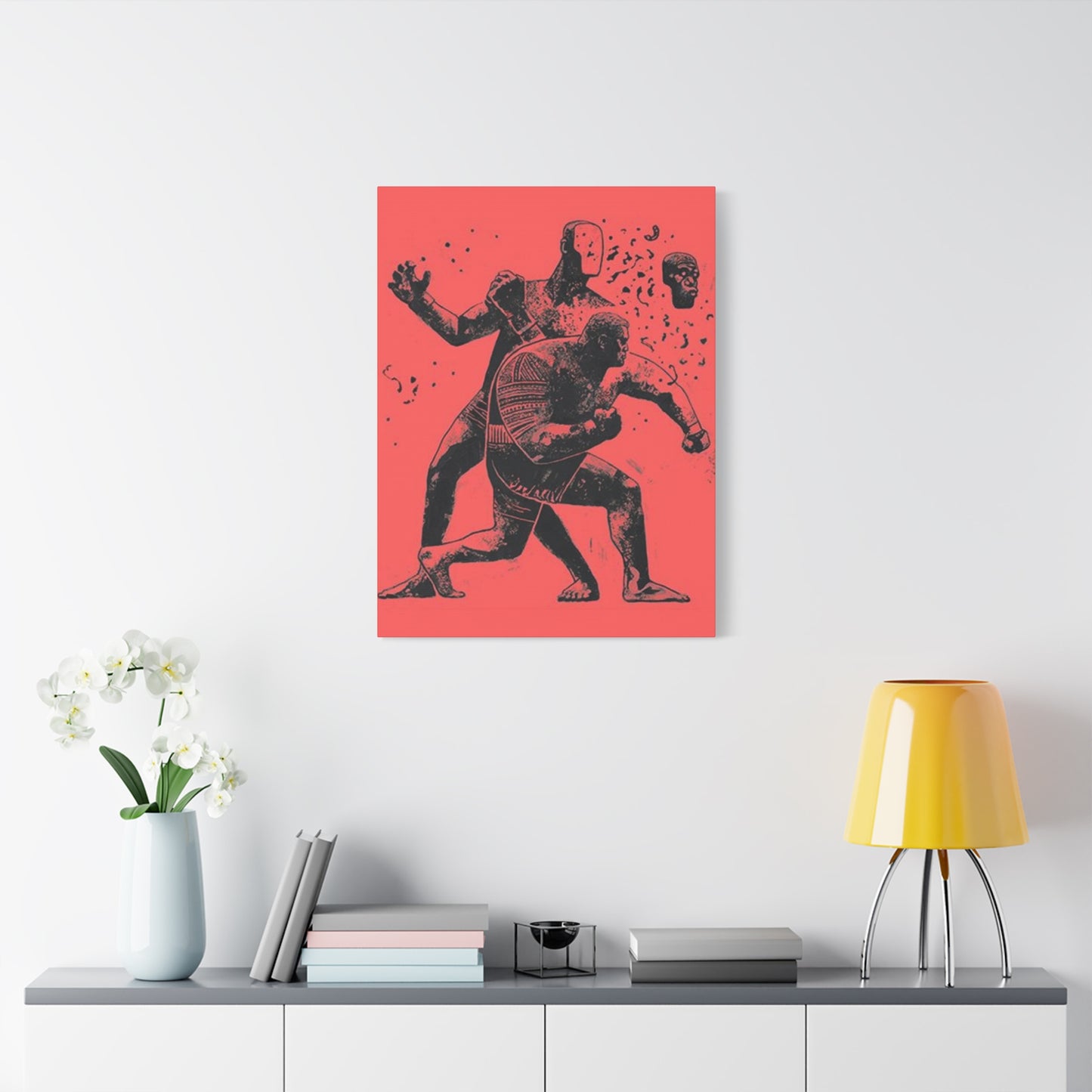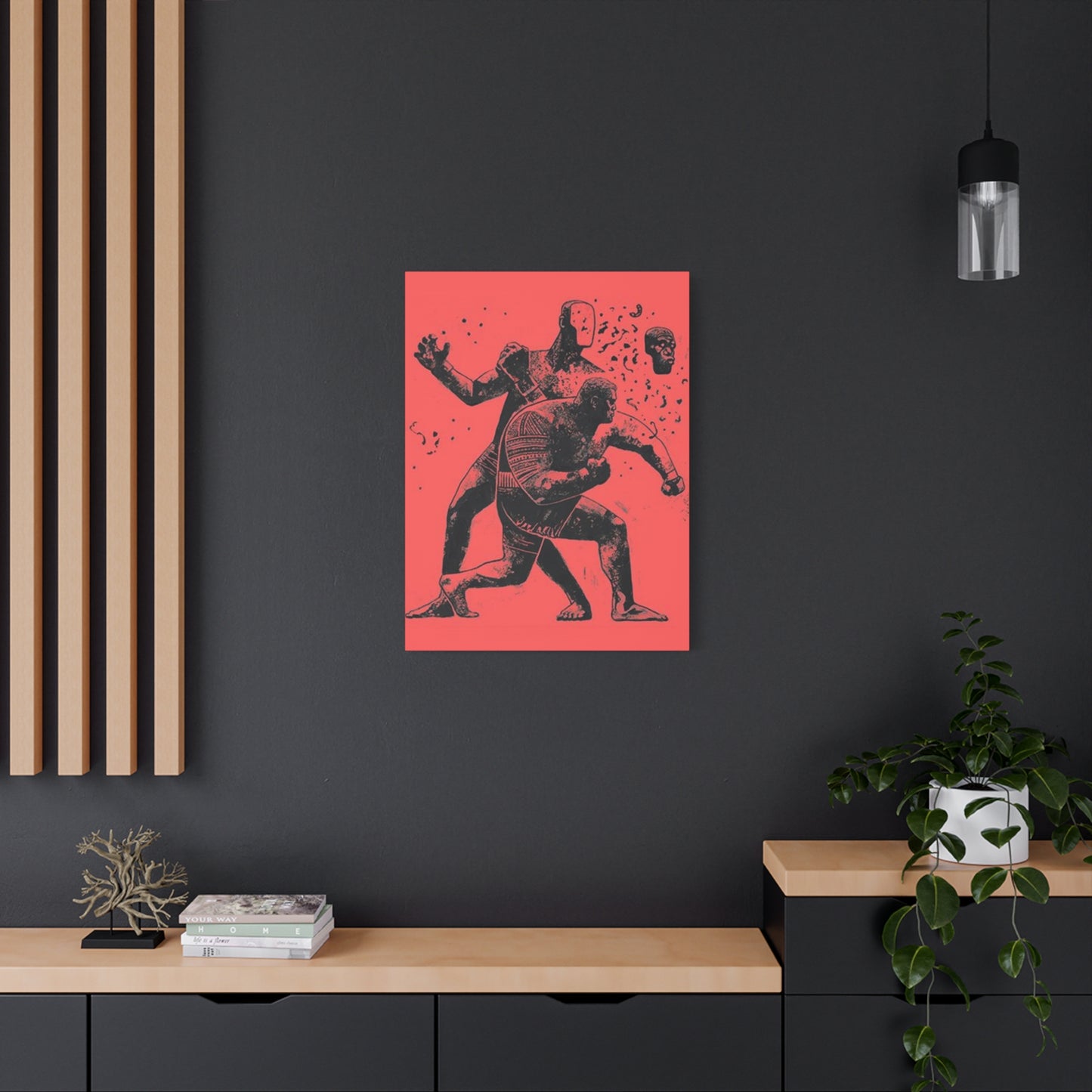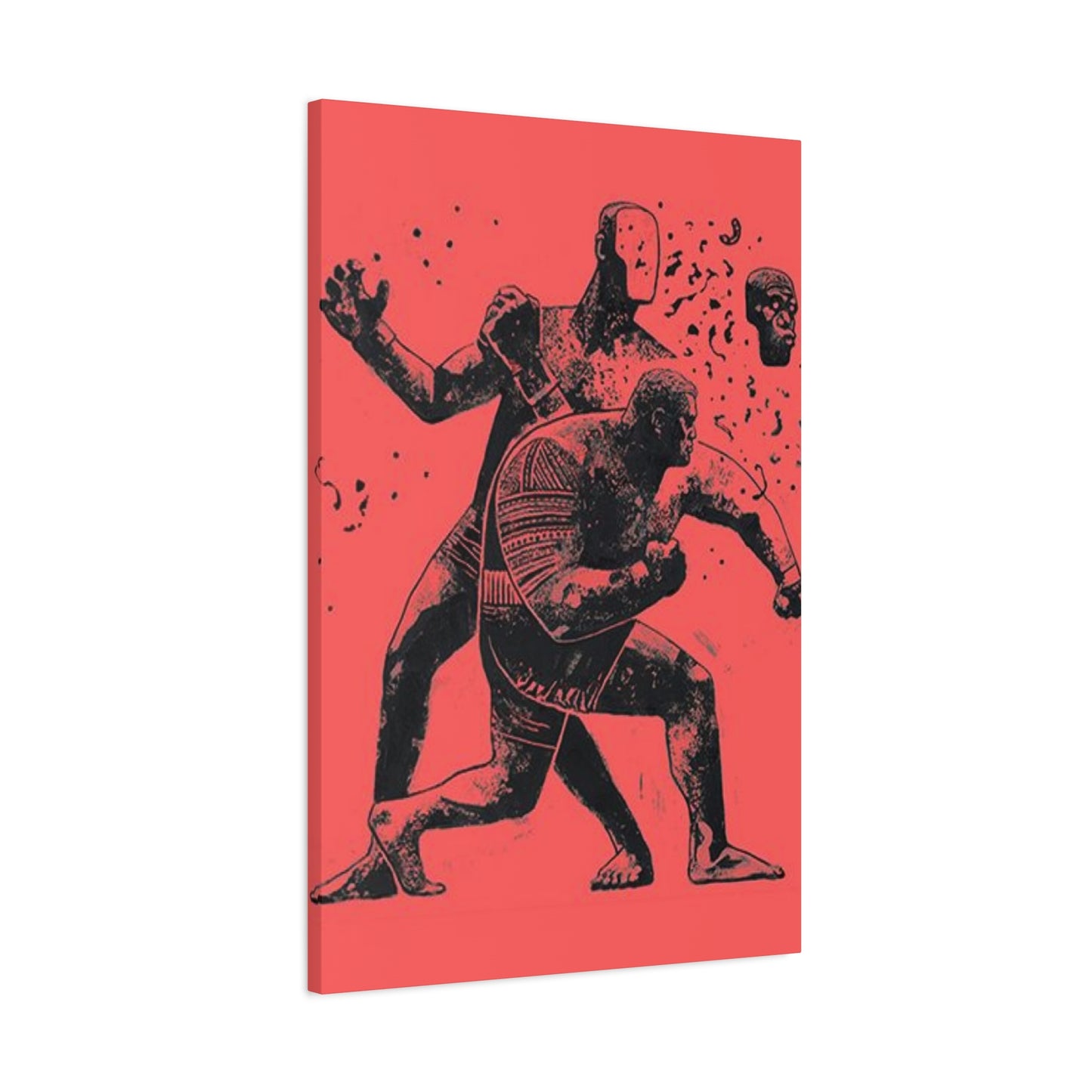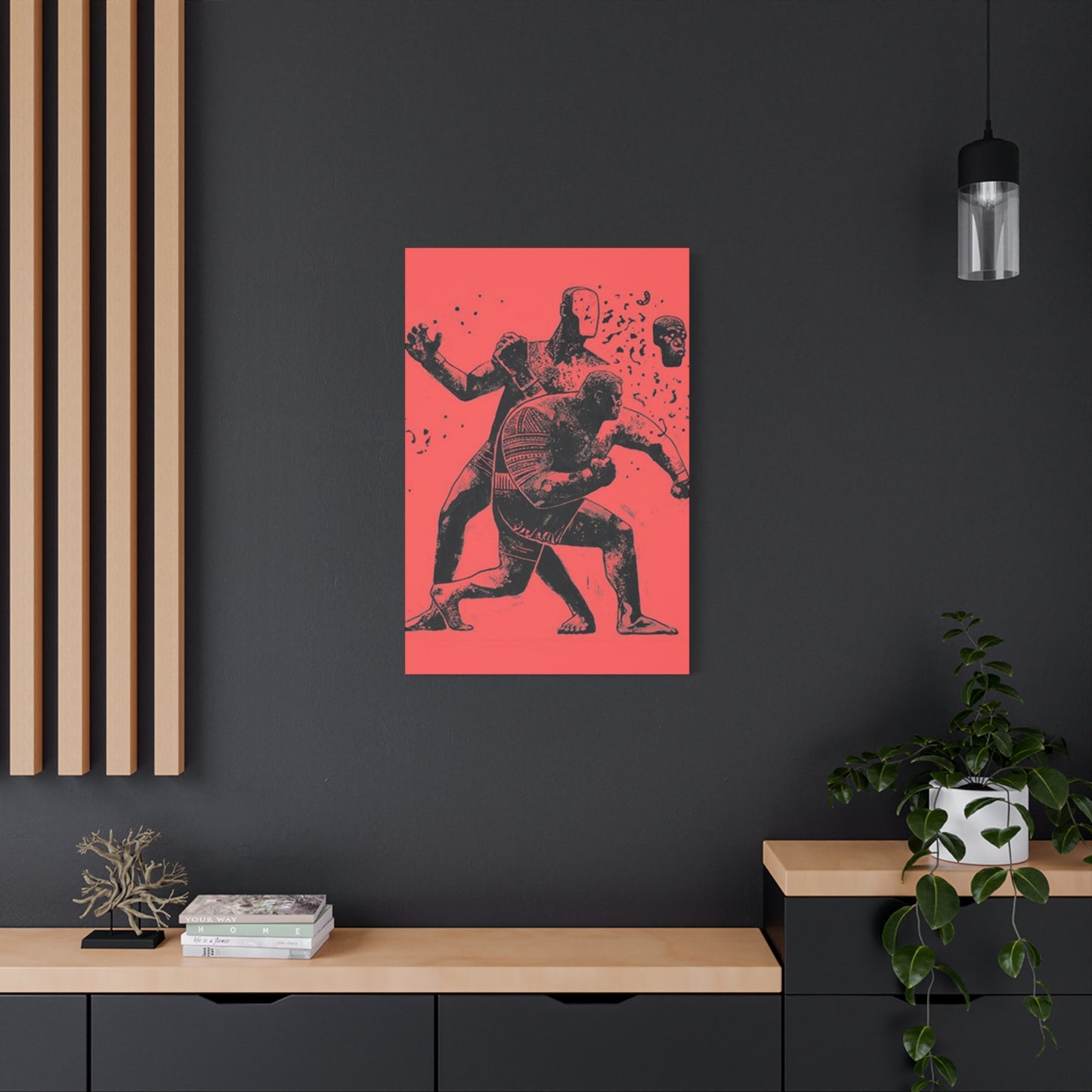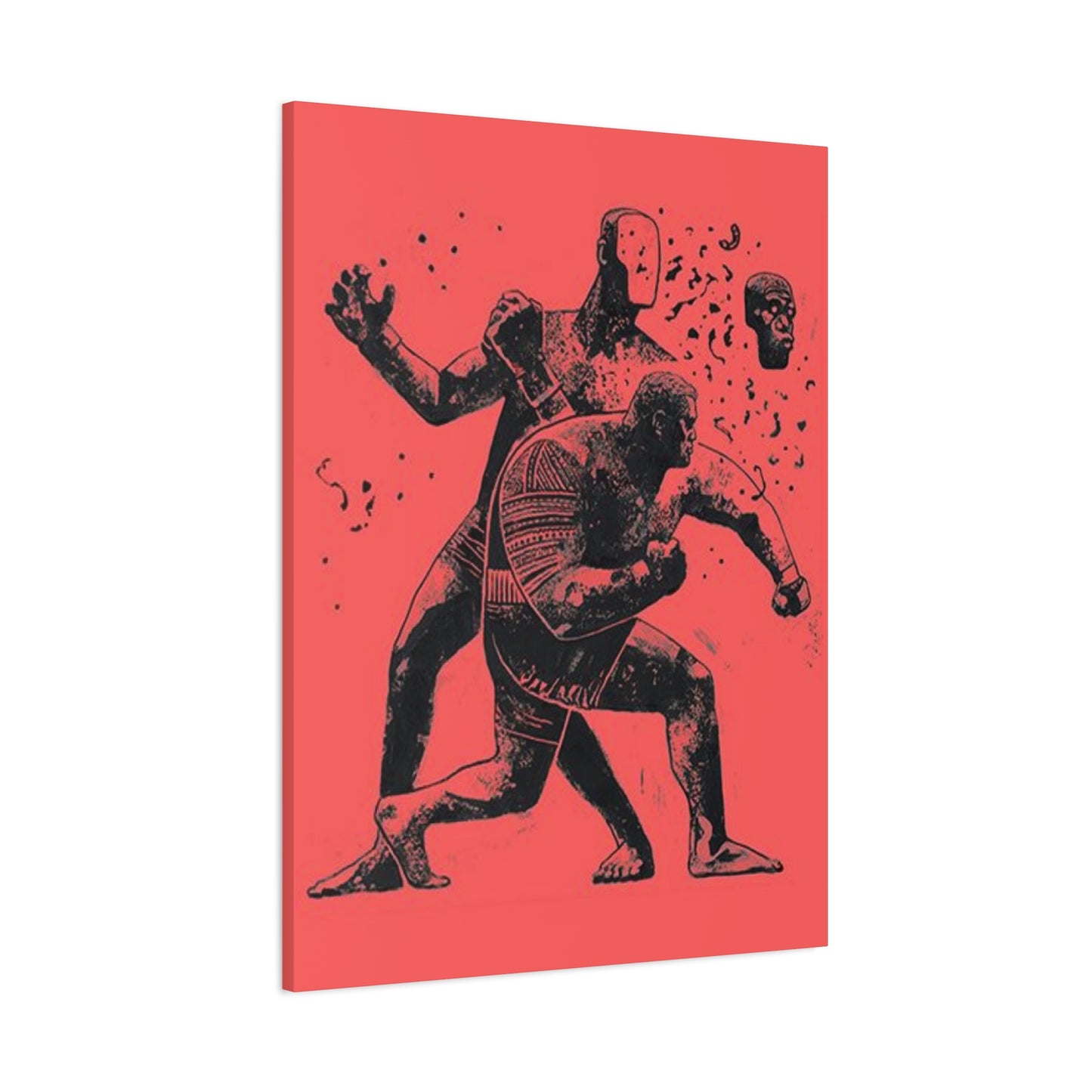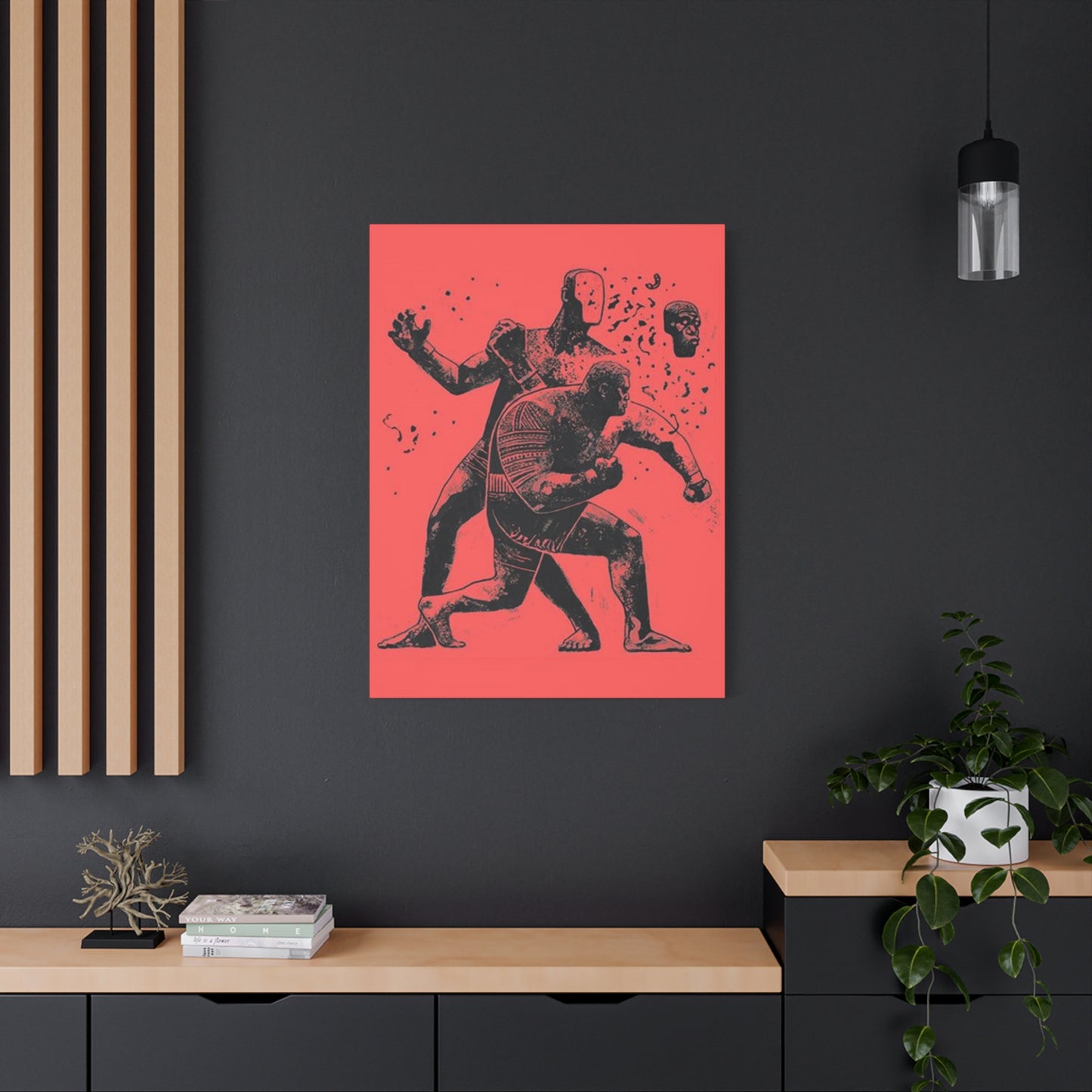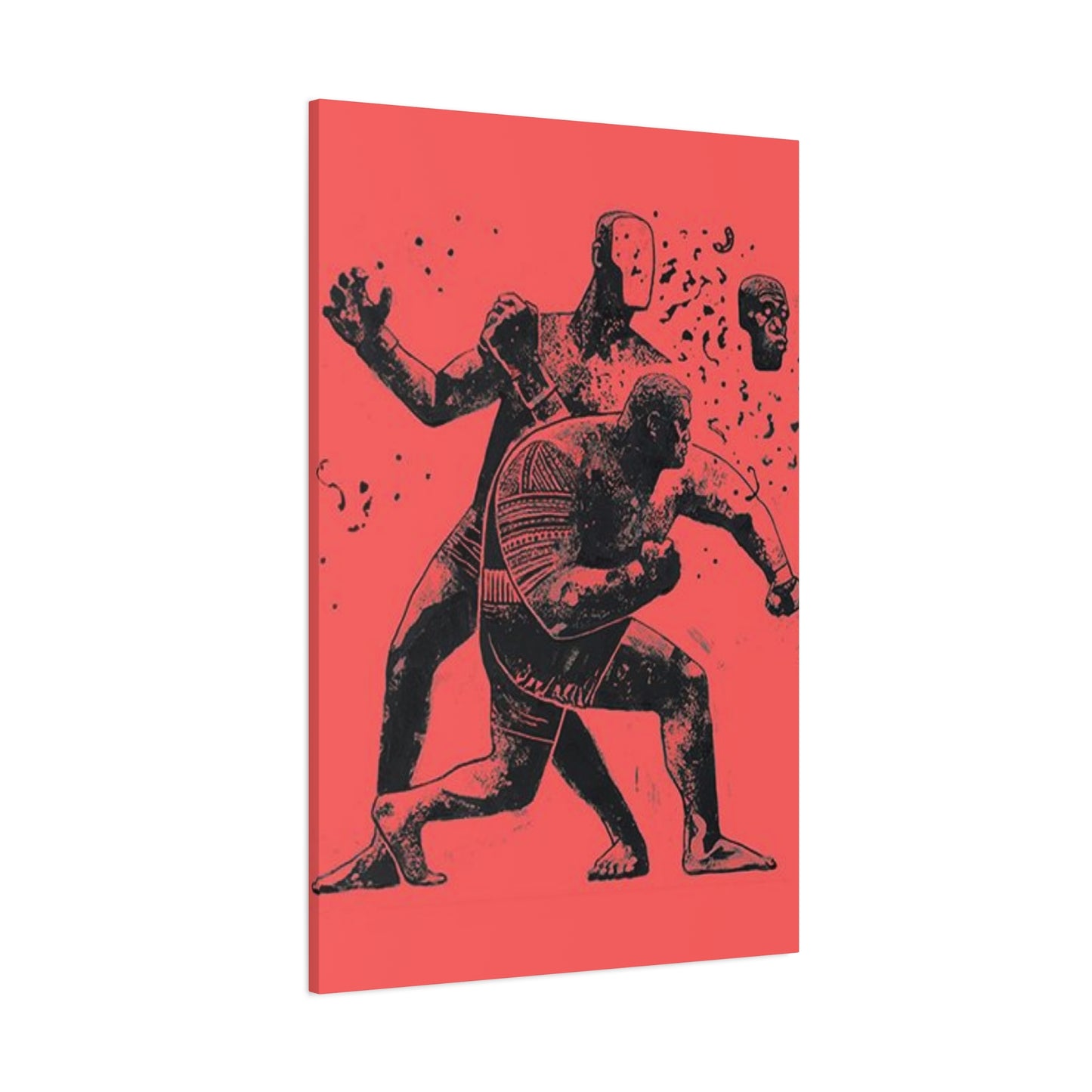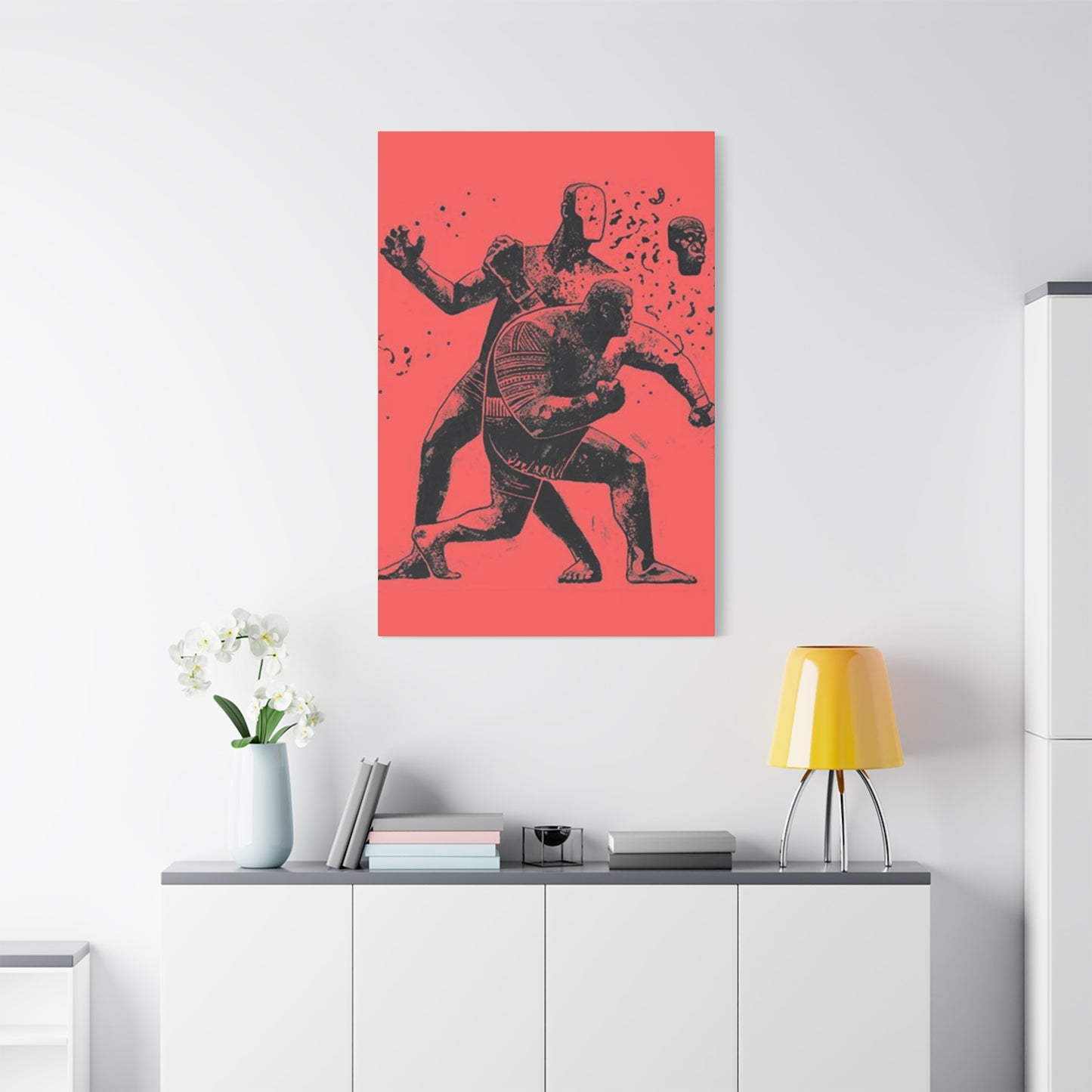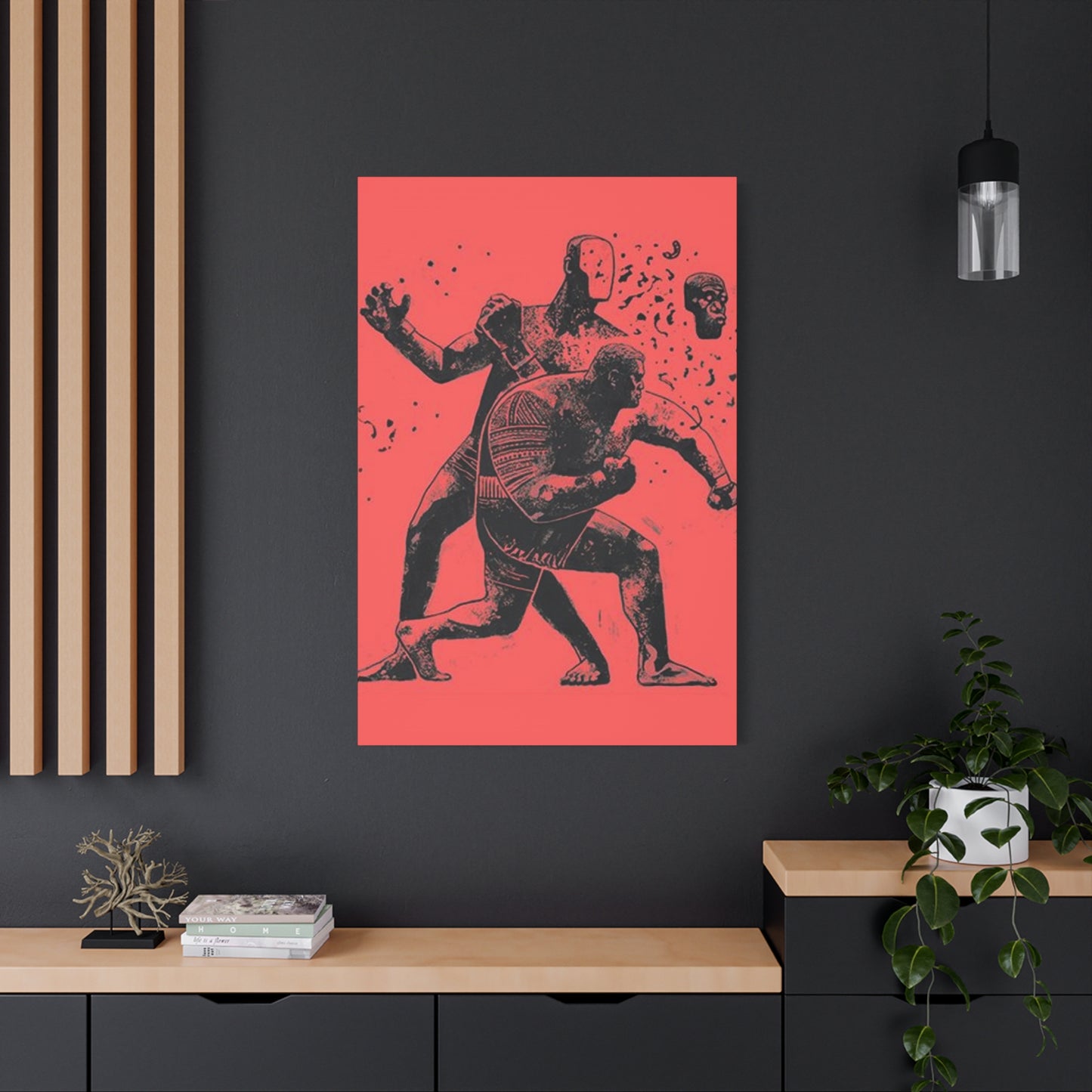Men’s Boxing Mixed Media Wall Art Prints: Elevate Your Space with Athletic Power
Boxing has long captivated audiences with its raw display of human strength, determination, and athletic prowess. When this powerful sport meets artistic expression through mixed media wall art canvas prints, the result is nothing short of spectacular. The imagery of two men boxing creates a dynamic focal point that resonates with sports enthusiasts, art collectors, and interior designers alike. This form of decorative artwork brings energy, motivation, and sophistication to any living or working environment.
The evolution of sports-themed artwork has taken remarkable strides in recent years, with boxing prints emerging as a particularly popular choice for modern spaces. These pieces capture the essence of combat sports while serving as powerful reminders of human resilience and competitive spirit. Whether you're designing a home gym, office space, man cave, or contemporary living room, boxing mixed media wall art offers versatility that few other decorative elements can match.
Mixed media techniques allow artists to combine various materials and methods, creating depth, texture, and visual interest that traditional prints simply cannot achieve. When applied to boxing imagery, this approach transforms iconic moments from the ring into stunning visual narratives that command attention and spark conversation. The interplay of colors, textures, and compositional elements creates artwork that feels alive with the same energy found in actual boxing matches.
The Artistic Appeal of Combat Sports Imagery
Combat sports have inspired artists for centuries, from ancient Greek pottery depicting wrestlers to Renaissance paintings showing gladiatorial contests. Boxing, as one of the oldest organized sports, carries this rich visual heritage forward into contemporary art. The physical drama of two men boxing provides artists with an endless source of compelling imagery that translates beautifully to canvas prints and mixed media presentations.
The artistic appeal lies in the inherent dynamism of boxing. Every punch, dodge, and footwork movement creates lines of motion that artists can capture and emphasize. The tension between the fighters, the spray of sweat caught in arena lighting, and the intense focus on their faces all contribute to creating images with tremendous visual impact. These elements make boxing artwork particularly effective at conveying emotions like determination, courage, and perseverance.
When rendered as mixed media wall art, boxing scenes gain additional depth through layered techniques. Artists might combine photographic elements with painted overlays, incorporate textural materials like fabric or metal leaf, or use digital manipulation alongside traditional brushwork. This fusion of methods creates pieces that engage viewers on multiple levels, inviting closer inspection while maintaining strong visual impact from across the room.
The monochromatic appeal of black and white boxing prints offers timeless elegance, while colorful interpretations can energize spaces with bold hues that reflect the excitement of match night. Sepia tones evoke the golden age of boxing, connecting contemporary spaces with the sport's storied history. This range of stylistic options ensures that boxing mixed media wall art can complement virtually any interior design scheme.
Historical Significance of Boxing in Visual Arts
Boxing's representation in visual arts dates back to ancient civilizations, where combat sports were celebrated as demonstrations of physical excellence and warrior spirit. Ancient Egyptian hieroglyphics depict boxing matches, while Greek and Roman artists immortalized pugilists in sculpture and frescoes. This historical lineage gives modern boxing artwork a connection to human culture that spans millennia.
During the 18th and 19th centuries, boxing gained popularity in Europe and America, and artists began documenting famous matches and legendary fighters. Lithographs and engravings from this era captured not just the physical confrontation but also the social context of boxing, from bare-knuckle brawls to organized championship bouts. These historical images now serve as inspiration for contemporary artists creating mixed media pieces that honor boxing's heritage.
The 20th century saw boxing art evolve alongside the sport itself. As boxing became increasingly mainstream entertainment, artists like George Bellows created powerful paintings that captured the brutal beauty of the ring. Bellows' work, including his famous "Stag at Sharkey's" and "Dempsey and Firpo," demonstrated how boxing could serve as subject matter for serious artistic expression, elevating it beyond mere sports documentation.
Photography revolutionized boxing imagery, allowing artists to capture split-second moments of impact, expression, and movement that painters could only approximate. Iconic photographers documented legendary fighters and historic matches, creating a visual archive that contemporary mixed media artists draw upon when creating modern interpretations. This photographic foundation provides authenticity to canvas prints while allowing for creative reinterpretation through mixed media techniques.
Mixed Media Techniques in Boxing Wall Art Creation
Mixed media art represents a revolutionary approach to creating visual experiences that engage multiple senses and perspectives. When applied to boxing imagery, these techniques transform standard prints into multidimensional artworks that capture the visceral nature of the sport. Artists working in this medium employ various methods to build layers of meaning and visual interest that resonate with viewers.
One common technique involves starting with a photographic base image of two men boxing, then adding painted elements to emphasize movement, highlight key compositional areas, or introduce expressive color palettes. Acrylic paints work particularly well for this purpose, as they can be applied in thin glazes or thick impasto textures depending on the desired effect. This combination of photographic realism and painterly interpretation creates tension that mirrors the sport itself.
Collage elements frequently appear in boxing mixed media pieces, with artists incorporating vintage newspaper clippings, ticket stubs, or fragments of boxing memorabilia into their compositions. These additions provide historical context and tactile variety that enhances the overall impact. When reproduced as high-quality canvas prints, even the texture of these collaged elements can be captured through advanced printing techniques.
Digital manipulation has opened new possibilities for mixed media boxing art. Artists can combine multiple photographic sources, adjust colors and contrasts, add graphic elements, and create compositions impossible to achieve through traditional methods alone. These digital techniques can then be merged with physical media applications before final reproduction as canvas prints, resulting in unique pieces that blur the line between fine art and commercial decoration.
Screen printing techniques allow artists to layer ink applications in ways that create bold graphic impact. When combined with other media, screen-printed elements can provide areas of flat, intense color that contrast beautifully with more naturalistic photographic or painted sections. This approach works particularly well for creating stylized boxing artwork that emphasizes the graphic power of athletic forms.
Texture plays a crucial role in successful mixed media boxing art. Artists might apply modeling paste, sand, or other materials to create physical relief on the canvas surface. When boxing gloves, facial features, or motion lines are built up with texture, the artwork gains physical presence that draws viewers closer for detailed examination. High-quality reproduction processes can capture these textural variations, ensuring that canvas prints retain the dimensional quality of original artwork.
Choosing the Right Boxing Canvas Print for Your Space
Selecting appropriate boxing mixed media wall art requires careful consideration of multiple factors including room function, existing decor, personal preferences, and spatial constraints. The right piece should enhance your environment while reflecting your appreciation for athletic excellence and artistic quality. Understanding how different styles, sizes, and compositions work within various settings helps ensure satisfaction with your choice.
Room function significantly influences artwork selection. A home gym or workout space benefits from motivational boxing imagery that energizes and inspires physical effort. Action-oriented compositions showing two men boxing at the height of combat provide the psychological boost that enhances workout intensity. For these spaces, bold colors and dynamic compositions work particularly well.
Professional office environments require more subtle approaches. Boxing artwork in offices should convey determination and competitive spirit without appearing aggressive or unprofessional. Artistic interpretations that emphasize the strategic and disciplined aspects of boxing, perhaps rendered in more muted color palettes or with abstract elements, maintain professionalism while celebrating athletic achievement.
Living rooms and entertainment spaces offer greater flexibility for bold artistic statements. Large-scale boxing canvas prints can serve as conversation-starting focal points that reflect the homeowner's interests and aesthetic preferences. These spaces allow for more experimental color schemes and dramatic compositions that might overwhelm smaller or more formal environments.
Man caves and personal recreational spaces provide ideal settings for extensive boxing art collections. Multiple pieces depicting different fighters, eras, or artistic styles can be arranged to create thematic gallery walls that celebrate boxing history and culture. These spaces embrace the full intensity and excitement of combat sports imagery without restraint.
Size considerations extend beyond simple wall dimensions. While a piece must physically fit the available space, it should also maintain appropriate visual weight relative to surrounding elements. Oversized artwork can make bold statements in spaces with high ceilings or expansive walls, while smaller pieces work better in intimate settings or as part of grouped arrangements.
Color coordination between boxing artwork and existing decor creates visual harmony. Black and white prints offer maximum versatility, complementing virtually any color scheme. Sepia or vintage-toned pieces suit traditional or industrial design aesthetics. Colorful interpretations should either complement existing room colors or provide intentional contrast that creates visual interest.
The emotional tone of boxing imagery varies considerably across different artistic interpretations. Some pieces emphasize the brutal physicality of combat, showing impacts and strain. Others focus on the grace and technique of skilled boxers, celebrating athletic beauty over violence. Understanding the emotional message you want your space to convey helps narrow choices to artwork that achieves your desired psychological impact.
Behind Sports Art in Interior Spaces
The presence of sports imagery, particularly dynamic scenes like two men boxing, influences the psychological atmosphere of interior spaces in profound ways. Understanding these effects helps explain why boxing mixed media wall art has become increasingly popular in both residential and commercial settings. The psychological impact operates on multiple levels, from conscious appreciation to subconscious emotional responses.
Motivational influence represents one of the most significant psychological effects of boxing artwork. Images of athletes pushing themselves to physical limits serve as powerful reminders of human potential and the rewards of disciplined effort. In workout spaces, this motivational effect becomes directly functional, inspiring viewers to match the determination displayed on canvas. Even in non-athletic settings, this subliminal message of perseverance and commitment influences mindset and behavior.
Identity expression through decor choices allows individuals to communicate their values, interests, and personality without words. Displaying boxing artwork signals appreciation for athletic excellence, competitive spirit, and physical culture. This form of self-expression helps define personal and professional spaces as extensions of identity, creating environments that feel authentically representative of the people who inhabit them.
Energy modulation within spaces occurs through artwork selection. Dynamic boxing imagery introduces kinetic energy that can invigorate otherwise static environments. The implied motion of fighters, the tension of competition, and the drama of athletic confrontation all contribute to creating atmospheres that feel alive and engaging. This energizing effect makes boxing prints particularly valuable in spaces where alertness, focus, and vitality are desired.
Historical and cultural connection provides psychological depth to boxing artwork. Many pieces reference legendary fighters or historic matches, creating links to broader sporting narratives that resonate with enthusiasts. This connection to larger stories and traditions gives artwork meaning beyond its purely visual appeal, enriching the psychological experience of living with these pieces.
Masculine aesthetics have traditionally associated combat sports imagery with male spaces, though this connection has evolved significantly. Boxing art now appeals across gender lines to anyone who appreciates athletic achievement, artistic quality, and the drama of competition. However, understanding traditional associations helps explain why boxing prints remain popular choices for spaces designed with masculine aesthetics in mind.
Stress relief through visual engagement with powerful imagery offers unexpected psychological benefits. Viewing dramatic artwork can provide brief mental escapes from daily concerns, while the controlled violence depicted in boxing scenes allows for safe processing of aggressive impulses. The physical exertion shown in boxing prints can even provide vicarious satisfaction that reduces stress levels.
Popular Styles in Boxing Mixed Media Wall Art
The diversity of artistic styles applied to boxing imagery ensures options for every aesthetic preference and interior design scheme. Contemporary artists continually experiment with new approaches to depicting two men boxing, resulting in an ever-expanding range of styles that cater to different tastes and decorating needs. Understanding these style categories helps buyers identify artwork that resonates with their personal aesthetic.
Photorealistic approaches prioritize accurate representation of boxing scenes with minimal artistic interpretation. These pieces appeal to purists who appreciate the sport's authentic appearance and want artwork that captures genuine moments from the ring. Advanced printing technology allows photorealistic boxing prints to reproduce fine details with remarkable clarity, creating pieces that rival traditional photography in quality.
Abstract expressionist boxing art takes the opposite approach, using colors, shapes, and textures to convey the essence of boxing without literal representation. These pieces emphasize emotional impact over accurate depiction, using gestural brushwork and dynamic compositions to suggest motion and energy. Abstract boxing artwork integrates easily into contemporary interiors where bold artistic statements are valued over literal imagery.
Pop art interpretations inject vibrant colors and graphic simplicity into boxing imagery, creating pieces that celebrate the sport's cultural significance while maintaining accessible appeal. Inspired by artists like Andy Warhol and Roy Lichtenstein, pop art boxing prints often feature bold outlines, Ben-Day dots, and unexpected color combinations that transform traditional boxing imagery into contemporary icons.
Vintage and retro styles evoke boxing's golden age through deliberate aging effects, sepia tones, and compositional approaches that reference historical boxing photography and advertising. These pieces appeal to nostalgia while providing visual interest through their weathered aesthetic. Vintage-style boxing prints work particularly well in spaces with industrial, traditional, or eclectic design schemes.
Grunge and urban styles incorporate street art influences, distressed textures, and edgy aesthetics that align boxing with contemporary urban culture. These pieces often feature spray paint effects, graffiti-style elements, and deliberately rough finishes that create attitude and visual impact. Urban-styled boxing artwork appeals particularly to younger audiences and works well in modern loft spaces or contemporary interiors.
Minimalist boxing art strips away unnecessary details to focus on essential forms and compositions. Using limited color palettes and simplified shapes, minimalist pieces create sophisticated statements that don't overwhelm spaces. This style suits modern and Scandinavian interiors where restraint and purposeful simplicity guide design choices.
Impressionist approaches to boxing imagery prioritize color and light effects over precise detail. Soft edges, visible brushstrokes, and atmospheric qualities create pieces that feel painterly and artistic rather than documentary. Impressionist boxing prints add sophistication and artistic credibility to spaces while maintaining the dynamic energy of the subject matter.
Mixed media experimental styles push boundaries by incorporating unusual materials, techniques, and conceptual approaches. These avant-garde pieces appeal to serious art collectors and those who want truly unique statements in their spaces. Experimental boxing artwork often becomes the centerpiece of art-forward interiors that prioritize creativity and innovation.
Color Theory in Boxing Artwork Selection
Color choices in boxing mixed media wall art dramatically affect both the artwork's visual impact and its compatibility with interior spaces. Understanding color theory principles helps buyers select pieces that achieve desired effects while harmonizing with existing decor. The psychological and aesthetic properties of different color approaches merit careful consideration when choosing boxing canvas prints.
Monochromatic schemes using only black, white, and gray values create timeless elegance that never appears dated. Black and white boxing prints emphasize form, composition, and tonal contrast without the distraction of color. This approach suits virtually any interior while allowing the drama of boxing imagery to take center stage. Monochromatic pieces also photograph well and maintain visual coherence when grouped with other artwork.
Warm color palettes featuring reds, oranges, and yellows inject energy and passion into boxing artwork. These colors align naturally with the heat and intensity of athletic competition, creating pieces that feel alive with motion and emotion. Red, particularly associated with aggression and vitality, appears frequently in boxing prints where it emphasizes power and drama. Warm-toned pieces work well in spaces where stimulation and activity are desired.
Cool color schemes using blues, greens, and purples create unexpected sophistication in boxing artwork. While seemingly contradictory to the sport's hot-blooded nature, cool tones can emphasize the strategic and technical aspects of boxing while providing visual refreshment. Blue-toned boxing prints suit contemporary interiors and professional spaces where controlled energy is more appropriate than raw aggression.
Complementary color combinations using opposing hues on the color wheel create maximum visual impact through contrast. Orange and blue, red and green, or yellow and purple pairings make boxing artwork pop with vibrant energy. These high-contrast pieces command attention and work well as focal points in neutral-toned rooms where bold accents are desired.
Analogous color schemes using neighboring hues create harmonious pieces with subtle sophistication. A boxing print using only warm tones or only cool tones maintains visual coherence while offering more interest than monochromatic approaches. Analogous schemes integrate easily into existing decor when chosen to complement room colors.
Sepia and vintage tones give boxing artwork nostalgic character that references historical photography. These brownish monochromatic schemes work beautifully in traditional interiors, libraries, and spaces with vintage or industrial aesthetics. The aged appearance adds gravitas and historical weight to boxing imagery.
Neon and fluorescent accents inject contemporary edge into boxing artwork. When used sparingly against darker backgrounds, bright neon colors create striking contrasts that appeal to modern tastes. These attention-grabbing pieces suit youth-oriented spaces, entertainment areas, and contemporary commercial interiors.
Metallic elements including gold, silver, and copper add luxury and visual interest to boxing mixed media pieces. Metallic accents catch light and create dynamic viewing experiences that change with lighting conditions. These premium finishes elevate boxing artwork from sports decoration to serious artistic statements.
Size and Proportion Considerations for Wall Art
Selecting appropriately sized boxing mixed media wall art requires understanding the relationship between artwork dimensions, wall space, and viewing distance. Properly proportioned pieces create balanced compositions that enhance rather than overwhelm or underwhelm spaces. Several guidelines help determine ideal sizes for different applications and environments.
The two-thirds rule suggests artwork should occupy approximately two-thirds of the available wall width above furniture or the total wall section being decorated. For a sofa measuring six feet wide, boxing artwork should ideally span about four feet to maintain balanced proportions. This guideline prevents pieces from appearing lost on large walls or cramped in smaller spaces.
Viewing distance influences optimal artwork size. Pieces intended for close viewing in hallways or small rooms can feature more detail and work effectively at smaller scales. Conversely, artwork in large rooms viewed from greater distances should be sized larger to maintain visual impact. A boxing canvas print in a spacious living room might need to measure four feet or more in width to avoid appearing insignificant.
Ceiling height affects vertical artwork dimensions. Standard eight-foot ceilings accommodate artwork up to about four feet tall before pieces begin feeling too large. Higher ceilings in contemporary homes allow for dramatically oversized pieces that can reach six feet or more in height. Vertical boxing compositions showing full-body images of two men boxing benefit from rooms with adequate ceiling height.
Gallery wall arrangements permit more flexibility with individual piece sizes. When creating grouped displays of multiple boxing prints, smaller individual pieces combine to create substantial visual impact. This approach allows for varied sizes within the arrangement while maintaining overall balanced proportions across the entire wall section.
Statement pieces intended as focal points should command attention through substantial size. A single large boxing canvas measuring four to six feet wide creates dramatic impact in living rooms, offices, or other spaces where bold artistic statements are desired. These oversized pieces work best on uncluttered walls where they can dominate without competing with other elements.
Hallway dimensions require careful consideration for boxing artwork placement. Narrow hallways benefit from vertically oriented pieces that complement the space's proportions, while wider halls can accommodate horizontal compositions. Since hallways typically involve closer viewing distances, medium-sized prints work well in these transitional spaces.
Multi-panel arrangements allow boxing imagery to span larger wall sections while creating visual interest through divided compositions. Triptychs showing sequential moments from a boxing match or complementary views of fighters create dynamic presentations. The gaps between panels add rhythm and allow each section to be appreciated individually while contributing to the whole.
Furniture relationships influence artwork sizing decisions. Boxing prints hung above sofas, beds, or consoles should relate proportionally to the furniture below. The artwork width should generally match or slightly exceed furniture width to create visual connection rather than awkward disproportion. Height above furniture typically ranges from six to twelve inches.
Canvas Print Quality and Production Methods
Understanding canvas print production quality helps buyers make informed decisions when purchasing boxing mixed media wall art. Various printing technologies, material choices, and finishing techniques affect both appearance and longevity. High-quality reproductions can rival original artwork in visual impact while offering affordability and accessibility.
Giclée printing represents the highest quality reproduction method for boxing canvas art. This archival inkjet process uses pigment-based inks that resist fading far longer than dye-based alternatives. Giclée prints capture subtle color gradations and fine details that lesser printing methods cannot reproduce, ensuring boxing imagery maintains maximum visual fidelity. Museums and galleries use giclée technology for producing limited-edition prints of valuable artworks.
Canvas material quality varies significantly across products. Premium cotton canvas provides superior durability and archival properties compared to synthetic alternatives. Heavier canvas weights ranging from eight to twelve ounces per square yard resist sagging and maintain taut appearance over time. Textured canvas surfaces add tactile dimension to boxing prints, enhancing the mixed media aesthetic.
Ink quality determines color vibrancy and longevity. Archival pigment inks resist UV degradation and maintain color accuracy for decades when properly displayed. Inferior dyes fade noticeably within years, particularly when exposed to direct sunlight. Boxing artwork printed with quality inks retains its visual impact throughout its lifespan.
Resolution and file quality affect print sharpness and detail. Boxing canvas prints should be produced from high-resolution source files, typically at least 300 dots per inch at final print size. Lower resolution results in pixelation and loss of detail that becomes particularly noticeable in larger prints. Detail-rich boxing imagery showing facial expressions and textural elements requires maximum resolution for optimal results.
Stretching and mounting techniques impact presentation and durability. Gallery wraps extend printed canvas around stretcher bar edges, creating finished sides that eliminate framing needs. Museum wraps use mirrored or solid color extensions for edge coverage. Properly stretched canvas maintains appropriate tension without warping or developing ripples.
Protective coatings guard canvas prints against dust, moisture, and UV damage. Clear acrylic or varnish applications create barriers that can be gently cleaned without damaging printed surfaces. These coatings also enhance color saturation and create slight sheen that enriches boxing imagery appearance.
Frame options range from minimalist floating frames to ornate traditional styles. Frameless gallery wraps suit contemporary interiors, while framed presentations add formality and protection. Frame selection should complement both the boxing artwork style and the room's existing design elements.
Placement Strategies for Maximum Visual Impact
Strategic placement of boxing mixed media wall art maximizes its visual impact while creating harmonious relationships with surrounding elements. Thoughtful positioning considers lighting, sightlines, complementary objects, and spatial flow to ensure artwork enhances rather than clutters environments. Several placement principles guide effective installation.
Eye-level positioning creates comfortable viewing experiences. The general guideline places artwork centers at approximately 57 to 60 inches from the floor, matching average adult eye height. In spaces where viewers are typically seated, like offices or bedrooms, slightly lower placement accommodates the adjusted viewing angle. Boxing artwork deserves positioning that allows comfortable appreciation of details and composition.
Lighting dramatically affects artwork appearance and should be carefully considered during placement. Natural light from windows can beautifully illuminate boxing prints but may cause fading over time if too intense. Positioning artwork on walls perpendicular to windows often provides good natural illumination without direct exposure. Artificial lighting including track lights, picture lights, or wall washers can be directed to highlight boxing artwork after dark.
Focal point creation guides placement decisions in rooms lacking architectural features that naturally draw attention. A large boxing canvas hung on the main wall visible from the room entrance immediately establishes visual hierarchy and directs attention. This focal point then anchors furniture arrangement and other decorative decisions.
Negative space surrounding artwork allows it to breathe and be appreciated fully. Overcrowded walls diminish individual pieces' impact, while adequate margins of empty wall space frame artwork effectively. Boxing prints benefit from generous surrounding space that emphasizes their energy and movement.
Furniture relationships create visual connections between boxing artwork and room furnishings. Centering artwork above sofas, beds, or consoles creates balanced symmetry. Alternatively, asymmetrical placement can create dynamic compositions when balanced by other elements like floor lamps or side tables.
Multiple piece arrangements require careful planning to create cohesive groupings. Gallery walls mixing various boxing prints should maintain consistent spacing between pieces, typically two to six inches. Creating paper templates and arranging them on walls before hanging helps visualize final results and prevents mistakes.
Corner placement offers opportunities for boxing artwork in L-shaped arrangements that wrap around corners. This approach works particularly well with multi-panel pieces or series of related prints showing different moments from boxing matches.
Height variations create visual interest in hallways and staircases. Boxing prints ascending or descending with staircase angles create dynamic presentations that complement architectural features. Ensuring consistent spacing between pieces maintains coherence despite varying heights.
Integrating Boxing Art into Various Interior Design Styles
Boxing mixed media wall art demonstrates remarkable versatility across different interior design aesthetics. Understanding how to integrate these athletic pieces into various decorating styles ensures cohesive results that enhance rather than clash with existing decor. Each design movement offers unique opportunities for displaying boxing imagery effectively.
Industrial design aesthetics embrace boxing artwork naturally through their appreciation for urban culture and raw materials. Exposed brick walls, metal fixtures, and reclaimed wood provide ideal backdrops for boxing prints, particularly those featuring vintage or grungy styling. The combination of industrial elements and combat sports imagery creates coherent narratives about strength, endurance, and working-class athleticism.
Contemporary modern spaces benefit from boxing artwork with clean lines and sophisticated execution. Abstract interpretations or minimalist compositions align well with modern design principles that emphasize simplicity and purposeful design. Large-scale boxing prints create focal points in open-concept modern homes where artwork helps define functional zones within larger spaces.
Traditional interior design can successfully incorporate boxing imagery when pieces reference the sport's historical aspects. Vintage-style prints with sepia tones or classical photographic treatments complement traditional furnishings and architectural details. Ornate frames add formality that bridges the gap between athletic subject matter and refined traditional aesthetics.
Scandinavian design's emphasis on minimalism and natural light calls for restrained boxing artwork choices. Black and white prints or simple line drawings of boxers suit the Nordic aesthetic without overwhelming its characteristic simplicity. The motivational aspects of boxing imagery align with Scandinavian values of health and active lifestyles.
Eclectic interiors offer maximum freedom for bold boxing artwork selections. These personalized spaces that mix various styles, eras, and influences readily accommodate diverse boxing prints. Eclectic rooms can feature multiple boxing pieces in different styles, creating layered visual narratives that reflect the homeowner's multifaceted interests.
Mid-century modern design pairs surprisingly well with boxing artwork when pieces feature graphic qualities and bold colors characteristic of the era. Pop art interpretations of boxing scenes echo mid-century aesthetics while introducing athletic themes. The clean lines and organic forms of mid-century furniture complement boxing imagery without visual conflict.
Rustic and farmhouse styles can integrate boxing art through pieces that emphasize vintage or historical aspects of the sport. Distressed finishes and muted color palettes help boxing prints harmonize with rustic materials and country-inspired furnishings. The combination celebrates both athletic tradition and rural American culture.
Art deco influences allow for glamorous presentations of boxing imagery. Metallic frames, dramatic lighting, and sophisticated compositions transform boxing prints into luxury decor items. The geometric patterns and bold contrasts characteristic of art deco complement the strong shapes found in boxing compositions.
The Role of Boxing Art in Home Gym Motivation
Home gyms represent one of the most natural and effective settings for boxing mixed media wall art. The motivational impact of powerful athletic imagery directly supports the space's primary function of facilitating physical training and exercise. Understanding how to leverage this psychological influence helps create workout environments that inspire maximum effort and consistency.
Visual reminders of peak performance establish aspirational standards that influence behavior. Boxing artwork showing athletes at their physical best provides concrete images of fitness goals and athletic achievement. These visual cues activate motivational circuits in the brain, making viewers more likely to push themselves during workouts and maintain training consistency.
The warrior mindset fostered by boxing imagery influences approach to physical challenges. Combat sports require mental toughness alongside physical conditioning, and boxing prints serve as reminders to bring this psychological strength to all training sessions. The discipline and determination displayed by boxers becomes transferable to other fitness pursuits.
Energy amplification occurs when dynamic boxing artwork creates psychologically energizing environments. The implied motion and intensity of boxing scenes raises ambient energy levels in workout spaces, helping practitioners overcome the inertia that often prevents training sessions. This environmental energy primes the body and mind for physical exertion.
Distraction from discomfort during difficult exercises can be supported by engaging boxing imagery. When muscular fatigue makes continuing a set challenging, glancing at compelling artwork provides brief mental respite that helps push through physical barriers. The brief psychological escape allows physical systems to recover enough to continue.
Historical connection to boxing's training culture links modern home gym users with generations of fighters who have pursued physical excellence. Vintage boxing prints particularly evoke this lineage, creating inspirational connection to the sport's dedicated training traditions. This historical context adds depth to the workout experience.
Multiple piece installations allow for thematic progressions that mirror training journeys. A series of boxing prints showing progression from amateur to champion boxer can metaphorically represent personal fitness journeys, with each piece marking different achievement levels or training phases.
Strategic placement at key viewing points maximizes motivational impact. Positioning boxing artwork directly in front of cardio equipment ensures visibility during training sessions. Mirrors commonly found in home gyms can be flanked by boxing prints that appear in peripheral vision during exercises, providing subtle motivational reinforcement.
Creating Gallery Walls with Boxing Themes
Gallery wall arrangements offer sophisticated approaches to displaying multiple boxing mixed media prints in cohesive compositions. These curated collections transform walls into dynamic visual narratives that celebrate boxing culture, history, and artistry. Successful gallery walls require careful planning regarding piece selection, arrangement, spacing, and thematic coherence.
Thematic unity guides piece selection for boxing gallery walls. Collections might focus on specific eras like golden age boxing, particular fighters or matches, artistic styles, or color schemes. This thematic consistency creates intellectual and visual coherence that transforms individual pieces into meaningful collections that tell larger stories.
Layout planning prevents installation mistakes and helps visualize final results. Creating paper templates matching artwork dimensions allows physical arrangement experimentation on walls before hanging begins. Photographing template arrangements provides reference during installation. Digital planning tools and apps also facilitate gallery wall design with virtual arrangement capabilities.
The salon-style approach fills entire wall sections with various-sized boxing prints hung closely together. This traditional arrangement method creates visually rich presentations that suit eclectic or traditional interiors. Salon arrangements work particularly well with vintage boxing imagery and memorabilia pieces mixed with canvas prints.
Grid arrangements provide structured presentations ideal for modern and contemporary spaces. Uniformly sized boxing prints hung in precise rows and columns create clean, organized appearances that complement minimalist aesthetics. Grid layouts require careful measurement to maintain consistent spacing but deliver impressive results.
Asymmetrical balance creates dynamic presentations without rigid structure. Varied-sized boxing prints are arranged intuitively to achieve visual balance through complementary positioning rather than strict symmetry. This approach suits contemporary and eclectic interiors while allowing creative expression in arrangement design.
Central anchor piece strategies build gallery walls around single dominant boxing artwork. A large statement piece occupies the prime position with smaller complementary prints clustered around it. This hierarchical arrangement creates clear focal points while allowing supporting pieces to enhance the central artwork's impact.
Horizontal progression arrangements align boxing prints along horizontal axes, creating visual movement across walls. This approach works well in long hallway spaces or above lengthy furniture pieces like sofas. The horizontal flow guides viewers' eyes across the entire composition systematically.
Frame coordination decisions significantly impact gallery wall aesthetics. Uniform frames create cohesive presentations that emphasize artwork over framing. Varied frames add visual texture and suit eclectic arrangements but require careful coordination to avoid chaos. Frameless gallery-wrapped canvases deliver contemporary appearances with minimal distraction from the boxing imagery itself.
Boxing Artwork in Commercial and Professional Spaces
Commercial environments including offices, gyms, sports facilities, and retail spaces increasingly incorporate boxing mixed media wall art to create distinctive atmospheres and communicate brand values. Professional applications of boxing imagery require different considerations than residential installations but offer powerful opportunities for environmental design and messaging.
Corporate office environments use boxing artwork to communicate values like determination, competitive excellence, and resilience. Reception areas with boxing prints immediately establish tone and company culture. Conference rooms featuring boxing imagery subtly remind participants of strategic thinking and performance excellence inherent in both business and boxing.
Fitness facilities represent natural settings for boxing canvas prints that motivate members and reinforce facility identity. Commercial gyms use boxing artwork throughout training areas, locker rooms, and cardio zones to maintain energetic atmospheres. Boutique fitness studios often feature cohesive boxing art collections that contribute to branded environments and memorable member experiences.
Sports bars and entertainment venues employ boxing artwork to establish athletic authenticity and create conversation-starting décor. Vintage boxing prints mixed with memorabilia create nostalgic atmospheres appealing to sports enthusiasts. Contemporary boxing art in modern sports bars demonstrates commitment to current athletic culture while maintaining visual interest.
Retail environments including sporting goods stores, men's apparel boutiques, and lifestyle shops use boxing imagery to communicate masculinity, athleticism, and performance. Boxing prints help establish brand identities and create shopping environments that resonate with target demographics. Strategic placement guides customers through retail spaces while supporting merchandise displays thematically.
Medical and therapeutic practices specializing in sports medicine or physical rehabilitation benefit from boxing artwork that inspires patients recovering from injuries. These images remind patients of athletic potential and encourage compliance with rehabilitation protocols. The motivational dimension of boxing prints supports therapeutic goals.
Hotels and hospitality venues incorporate boxing art to create memorable guest experiences and distinctive property identities. Urban hotels particularly embrace boxing imagery for its connection to city culture and energy. Boxing-themed suites or floors create specialized accommodations appealing to sports enthusiasts.
Restaurant and nightlife venues use boxing artwork to establish energetic atmospheres that complement dining and entertainment experiences. Casual restaurants with sports themes employ boxing prints alongside other athletic imagery. Upscale establishments might feature sophisticated boxing art that references the sport more abstractly.
Legal and professional service firms occasionally employ boxing imagery to suggest competitive excellence and fighting spirit in advocating for clients. Subtle, sophisticated boxing artwork in law offices or financial advisory spaces communicates determination without appearing aggressive or unprofessional.
Conclusion:
In conclusion, men’s boxing mixed media wall art prints offer a bold and inspiring way to elevate any space with the raw power, discipline, and athleticism that define the sport of boxing. These artworks capture more than just the physicality of boxing—they embody the spirit of determination, resilience, and focus that athletes bring into the ring. By integrating mixed media techniques, artists add layers of texture, depth, and emotion, transforming each print into a dynamic tribute to the art and science of boxing.
What sets men’s boxing mixed media art apart is its ability to fuse traditional and contemporary elements, blending realistic depictions of boxers with abstract or expressive backgrounds. This combination highlights the intensity of the sport while allowing the emotional journey of each athlete to shine through. Whether it’s the powerful stance before a fight, the fluid motion of a punch, or the moment of triumph, these prints convey movement and energy in a way that captivates viewers and inspires admiration.
The tactile quality of mixed media—combining paint, collage, charcoal, and other materials—adds richness to the artwork, inviting closer inspection and engagement. These layers echo the complexity of boxing itself: a blend of strategy, endurance, and raw physical strength. This multidimensional approach also allows for creative freedom, enabling artists to explore themes of struggle, victory, and personal growth that resonate universally, beyond just the sport.
Men’s boxing mixed media wall art prints are highly versatile and suit a range of interior styles. They bring a commanding presence to modern lofts, home gyms, sports rooms, or even contemporary living spaces that embrace bold, statement-making décor. Their strong contrasts and dynamic compositions make them ideal focal points that energize the environment, motivating both athletes and admirers alike.
Moreover, these prints celebrate more than just athletic prowess—they honor the dedication, sacrifice, and courage that boxing demands. Displaying such artwork is a powerful reminder of the human capacity to overcome challenges and push beyond limits. It serves not only as decoration but as an emblem of strength and perseverance that can inspire everyday life.
Ultimately, men’s boxing mixed media wall art prints transform any space into a powerful arena of inspiration and energy. By choosing these dynamic pieces, you invite the spirit of athletic excellence and passion into your environment, creating a space that celebrates strength, resilience, and artistic expression.

















